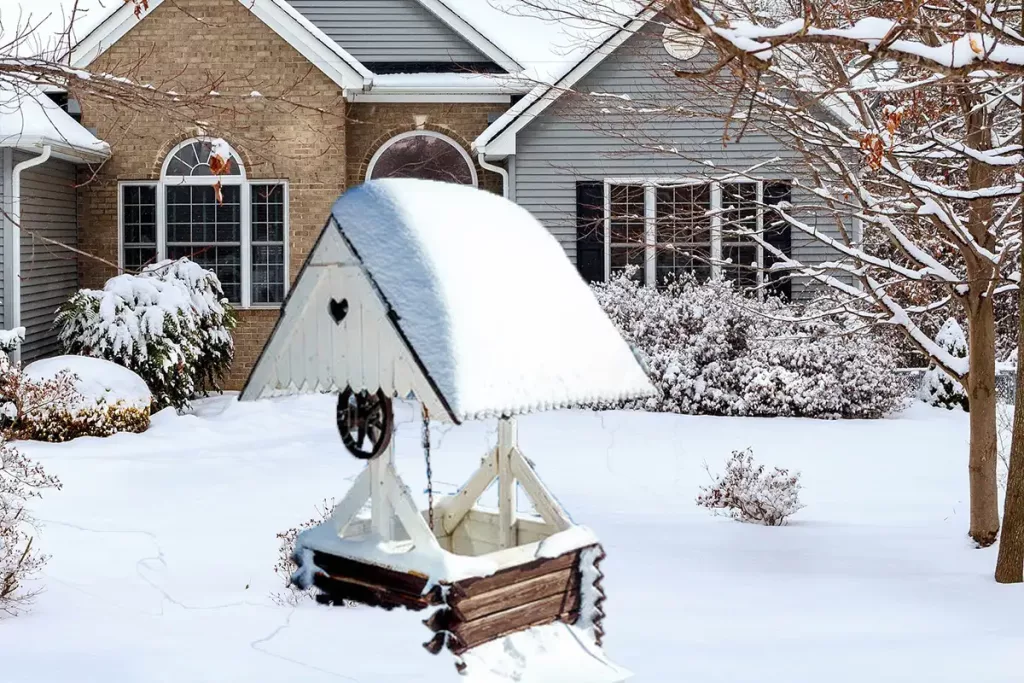
Winter ||A home “well” typically refers to a water well located on a residential property. A water well is a hole that’s drilled, dug, or driven into the ground to access groundwater, which can then be pumped to the surface and used for various purposes, such as drinking, cooking, irrigation, and other household needs.
In a residential context, a well can provide an independent and private source of water for a homeowner, especially in areas where access to municipal water systems might be limited or expensive. Wells can vary in depth and construction method, depending on factors like the geological characteristics of the area, the water table depth, and local regulations.
Owning a well involves certain responsibilities, including regular maintenance to ensure water quality and proper functioning. It’s important to follow local regulations and guidelines for drilling, maintaining, and using wells to ensure the safety of the water supply and the environment.
Winterizing a house with a well involves taking steps to protect both the well system and the plumbing within your home from the potential hazards of freezing temperatures. Here’s a guide on how to winterize a house with a well:
Insulate Exposed Pipes
Wrap any exposed water pipes, both indoors and outdoors, with insulation to prevent them from freezing and bursting. This includes pipes leading from the well to your home.
Protect the Well Head
The well head is the above-ground portion of the well casing. Insulate and cover the well head to shield it from cold temperatures. You can use specialized well covers or build a temporary enclosure using materials like foam insulation board and a tarp.
Disconnect and Drain Outdoor Hoses
Disconnect all outdoor hoses from faucets and drain the water from them to prevent freezing. Close the outdoor faucets afterward.
Empty and Insulate Outdoor Faucets
If your outdoor faucets are not frost-free, turn off the water supply to them from inside the house. Open the faucets to drain any remaining water, then close them. Insulate the faucets using faucet covers or foam insulators.
Turn Off and Drain Irrigation System
If you have an irrigation system connected to your well, shut off the water supply to it and drain any remaining water to prevent freezing damage.
Keep Heat On
Maintain a minimum temperature inside your home, even if you’re away, to prevent the plumbing from freezing. Set the thermostat to at least 55 degrees Fahrenheit (12 degrees Celsius).
Insulate Interior Pipes
In areas where pipes are located in unheated spaces like the basement, attic, or crawl space, use pipe insulation to protect them from freezing.
Monitor Well Pump and Pressure Tank
If you have a submersible well pump and pressure tank located in an unheated area, insulate and protect them. Some well systems may require additional heating elements to prevent freezing.
Consider a Well House or Enclosure
If your well equipment is located in an exposed area, you might consider building a well house or enclosure to provide additional protection against the cold.
Have a Backup Power Source
Be prepared for power outages that can affect your well pump’s operation. Consider having a backup power source, such as a generator, to ensure access to water during outages.
Regular Maintenance
Before winter arrives, ensure that your well system is in good working condition. Address any maintenance or repairs that are needed to prevent issues during the colder months.
Remember that the specific steps you need to take can vary based on the type of well system you have, the local climate, and other factors. If you’re unsure about any aspect of winterizing your well and plumbing, it’s a good idea to consult with a professional well contractor or plumber who can provide personalized guidance based on your situation. Read More>>
[…] Also, clean the rooftop properly for rain, ice, and snow. Look for any damage on the rooftop, and if there is any hole or anything, fix it immediately. Remove any leaves or anything which can hold the water. Read Also>> […]